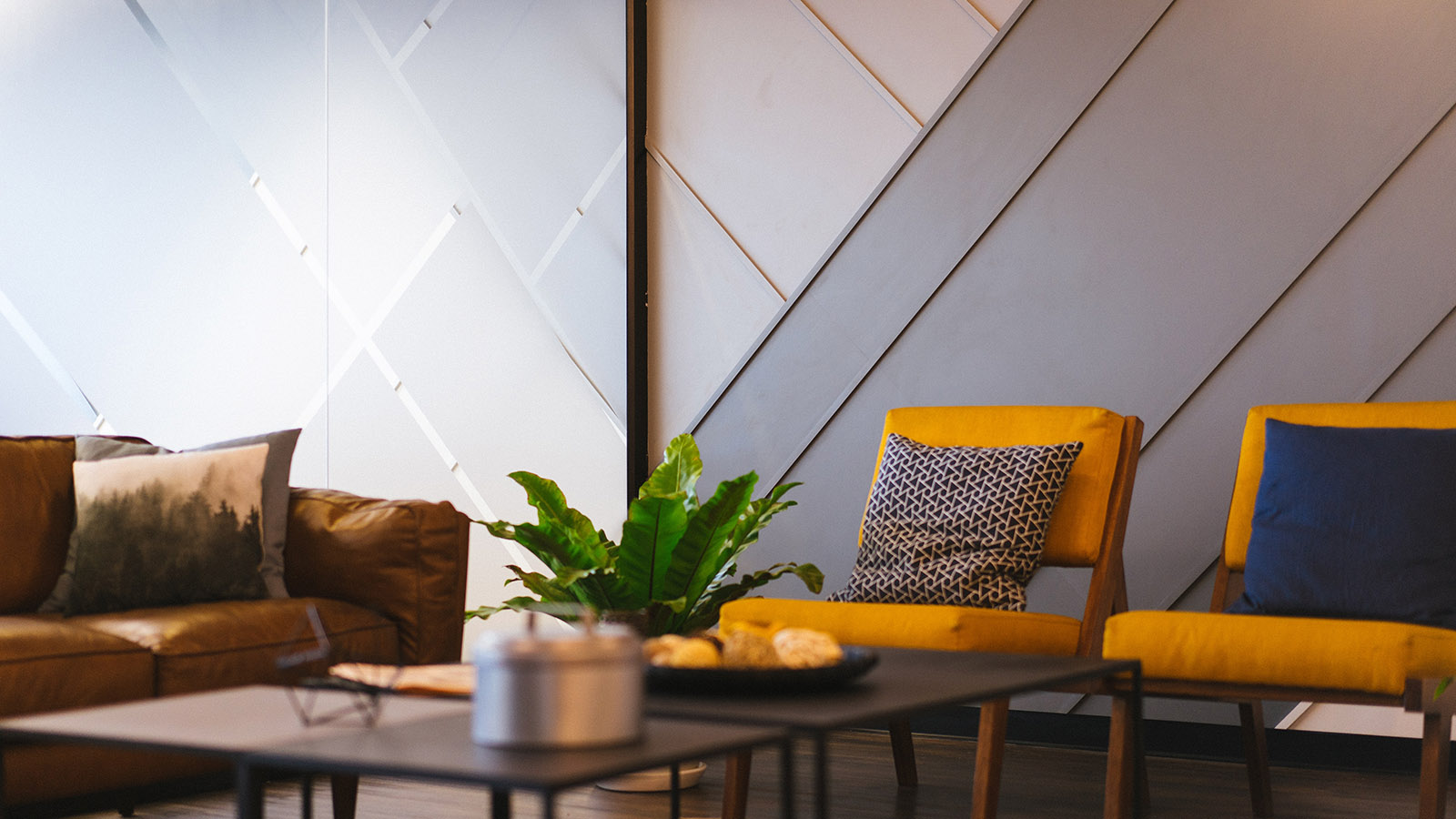A set of seven complimentary elements—space, line, light, forms, color, texture and patterns—define the timeless art of interior design. Harmoniously joining those essential components form the backbone to any aesthetically pleasing interior space; a challenge that delights, perplexes and evolves eternally, much like fashion or haute cuisine. It is a dynamic craft.
In homage to those elements, the VIEWS. team presents seven of our favorite trends in interior design, contemporary and tasteful. Try your hand at any or all of these popular styling offshoots to provide your mountain home with a chic makeover sure to earn the envy of guests (be cheeky) and the appreciation of family.
– The Editors


Photo by Aaina Sharma
1. EARTHY COLORS
Although the Pantone Color of the Year—an annual, trendsetting designation—is “Classic Blue,” one of the most popular emerging interior design practices is the integration of earthy tones into living and work spaces. With residences either on or at the base of a mountain as grand as Lone Mountain, the concept should be quite palatable for Big Sky residents. Think colors that include words harvested straight from nature—“Forest Night,” “Dusty Green,” “Charred Clay,” “Earth Brown,” “Olive Green” and “White Sulfur,” among dozens more in the organically inclined collection. These choices will only help to integrate your living space into the beautiful surroundings that sit just on the other sides of windows and walls.


Photo by Hutomo Abrianto
2. BIOPHILIC DESIGN
Take trend No. 1 a step further with biophilic design, a concept that seeks to form connective tissue between indoor and synthetic living spaces with the outdoors. The foundation of this trend incorporates natural light, water, organic shaped furniture, indoor plants and gardens, stone, wood, metals and natural imagery to bring this interior design theory to life. What might that look like? Woven straw ottomans, wooden chairs upholstered with jungle patterned fabrics, floral throw pillows, raw metal pots for trees, bamboo side tables, cowhide rugs and blinds or shades that allow plenty of that Montana sunshine to brighten every corner of the room. And don’t do it just for the aesthetics—which are always pleasant, when done right—research suggests incorporating direct or indirect elements of nature into one’s home can reduce stress, balancing blood pressure levels and heart rates.


Photo by Dan Gold
3. FLORAL – VEGETATION WALLPAPER
No. 3 pairs excellently with those design elements touted by Nos. 1 and 2: floral wallpaper. Just as fashion trends tend to come back into style, so too do interior design fads, and floral wallpaper is one such Lazarus. Though, don’t be mistaken, this isn’t granny’s powder room floral wallpaper, delicate and dainty. Think BOLD. We’re talking bright flowers where a single petal takes up square feet of wall space, and thick green leaves and tendrils spanning the spaces in between. Vibrant and dynamic, choosey floral wallpaper can serve as a defiant, contrasting element or one that sets the tone for the entire scheme of the room—designer’s choice. No matter the route, the outcome will always exhibit personality and class for those brave enough to venture outside the box.


Photo courtesy of You X Ventures
4. MINIMALIST MAXIMALIST
min·i·mal·ist (adj.) – relating to a basic design structure stripped of superfluous elements, colors, shapes and textures; basic
max·i·mal·ist (adj.) – relating to a bold mix of color, pattern and texture with special emphasis on layering, collections and eccentric design choices
With the above definitions, how could the two concepts ever be joined into a single interior design trend? Such is the beauty of the minimalist-maximalist movement, which blends the limited practices and pieces espoused by a minimalist with the eyepopping color, textures, patterns and eccentricities of a maximalist. This involves limiting a room to few, select items, but each must stop the show. Pull this trend off, and you’ll find a novel form of balance that at once fosters a calming feng sui, yet also excites.


Photo by Lasse Moller
5. LAYERED CONTRASTING DÉCOR
For those struggling to choose between new and old, bright and neutral, why not both? Such is the basis of layered and contrasting décor, an emerging interior design trend that is an evolution of the maximalist movement— only less gaudy, depending on your perspective. By combining styles of furniture that are traditionally mutually exclusive, adding a pop of color and some biophilic design here and there, you get a modern look with something for everybody—and harmoniously assembled into a scene that never bores, a tasteful “I Spy” experience folded seamlessly into your home’s interior design.


Photo by Elena Putina
6. FIBER ART
Art snobs, hold your nose, because here comes a curious newcomer that will certainly drive you a little mad—that is until fiber art becomes widely accepted and respected, and then you too hop on board with a purchase. Fiber art is just as it sounds: pieces made from woven or lose material, often gaining shape through gravity. With plenty of texture, and hand-woven for those that have a pension for innovative craftsmanship, these pieces will provide a dash of novelty to any room and will undoubtedly serve as an easy conversation starter at your next soirée. And for the artistes in the bunch, a quick search on YouTube reveals dozens of do-it-yourself options for a piece that becomes instantly unique, personal and affordable (the top artists in the medium charge several thousand dollars per piece, depending on its size).


Photo by Vecislavas Popa
7. MULTIFUNCTIONAL SPACES
Long gone are the days where each room had its own specific use and activity—no exceptions. What a boring way to imagine a living space, a home, where instead of a free-flowing experience—much like life itself—compartmentalization rules. Seems somewhat controlling, no? Today, people increasingly opt for multifunctional spaces, for example, where a kitchen and a living room have no boundary, or where only a Japanese-style room divider separates an office and a home gym. There’s something liberating to the approach, and the benefits are all too easy to see—more excuses to congregate and share time with the people you love, for one, or an ease of transitioning in between “modes” of home living. Continuity, here, is key.








